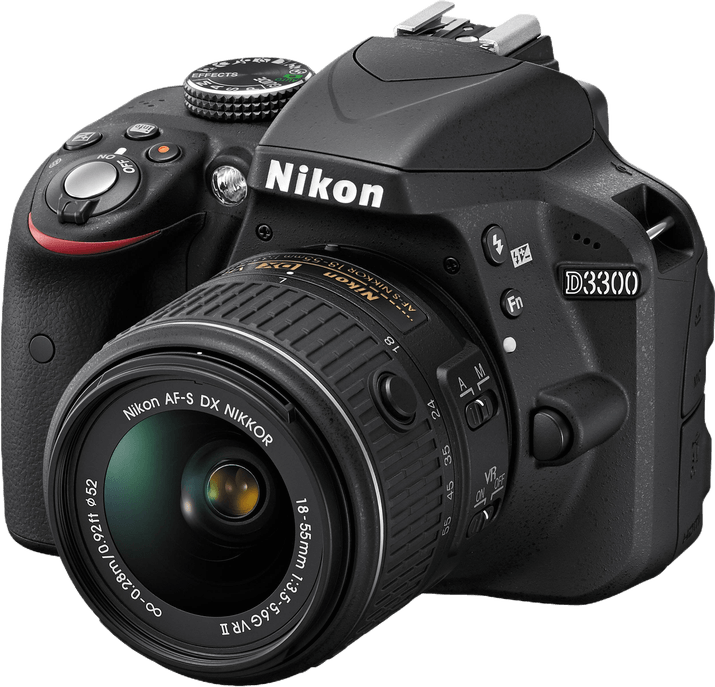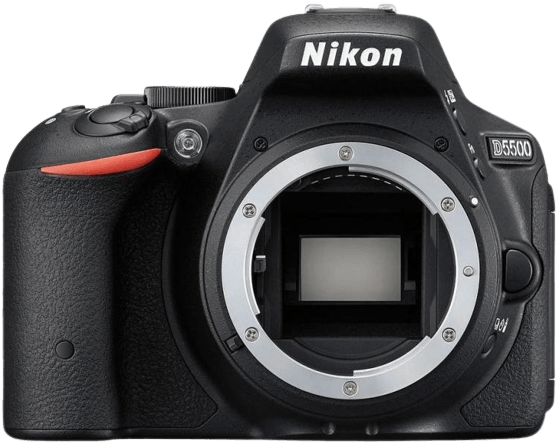Nikon D3300 vs D5500 Comparison
Nikon D3300

Nikon D5500

The Nikon D5500 comes out ahead with a score of 61/100, compared to the Nikon D3300‘s score of 55/100. Both cameras are DSLR models, released in 2014 and 2015 respectively, with the D3300 priced at $650 and the D5500 at $900. They have similar dimensions, with the D5500 being slightly lighter at 420g, compared to the D3300’s 430g.
The winning Nikon D5500 offers a higher score, making it a better camera choice for photographers. However, the Nikon D3300 still has its advantages, such as a lower launch price, making it a more budget-friendly option.
When deciding between these two cameras, consider your specific needs and budget. The Nikon D5500 is the better choice for those who prioritize quality, while the Nikon D3300 is a more affordable option for those looking to save money without compromising on performance.
Nikon D3300 vs D5500 Overview and Optics
The Nikon D5500 narrowly wins in optics with a score of 65/100, compared to the Nikon D3300’s score of 64/100. Both cameras share several specifications, including 24.2 megapixels, a shooting speed of 5, a CMOS sensor type, an Expeed 4 processor, an APS-C sensor size, a Nikon F DX lens mount, and no image stabilization.
The D5500 holds a slight advantage due to its higher DXOMARK score for the sensor, at 84, compared to the D3300’s score of 82. This difference means that the D5500 has a slightly better sensor performance, resulting in marginally improved image quality. This advantage, however, is quite minimal and may not be noticeable in everyday photography.
On the other hand, the D3300 is not entirely outperformed by the D5500. Both cameras share many of the same features, making them quite similar in terms of optics. Therefore, the D3300 still holds its ground as a capable camera, despite its marginally lower score.
In comparing the optics of the Nikon D3300 and the Nikon D5500, the D5500 emerges as the winner, albeit by a small margin. Its slightly higher DXOMARK score for the sensor gives it a minor advantage over the D3300. However, the two cameras share numerous specifications, making them quite comparable in terms of optical performance. While the D5500 takes the lead, the D3300 remains a strong contender with its nearly identical features.
Nikon D3300 vs D5500 Video Performance
The Nikon D5500 outperforms the Nikon D3300 in video capabilities with a video score of 70/100 compared to the D3300’s 56/100. Both cameras share common specifications such as Full HD max video resolution, max video dimensions of 1920 x 1080, and a max video frame rate of 60fps. However, the D5500 holds an advantage with its built-in time-lapse functionality, which the D3300 lacks.
The D5500’s higher video score and time-lapse functionality make it a more versatile option for videographers. Time-lapse is a sought-after feature for capturing stunning visuals and dynamic scenes, providing an edge for the D5500 in terms of creative possibilities. This advantage contributes to the D5500’s superior video performance.
Although the Nikon D3300 has a lower video score, it still offers solid video capabilities. The shared specifications of Full HD resolution, 1920 x 1080 dimensions, and 60fps frame rate ensure that the D3300 can capture high-quality footage. Despite lacking time-lapse functionality, it remains a capable camera for those who prioritize still photography and occasionally shoot video.
Comparing the video capabilities of the Nikon D3300 and D5500, it is evident that the D5500 is the superior option due to its higher video score and built-in time-lapse functionality. However, the D3300 remains a viable choice for photographers who do not require advanced video features. Ultimately, the needs and preferences of the user will determine the most suitable camera.
Nikon D3300 vs D5500 Features and Benefits
The Nikon D5500 emerges as the winner in the features comparison, scoring 59/100, while the Nikon D3300 scores 41/100. Both cameras share some common specifications, such as screen size (3 inches for D3300 and 3.2 inches for D5500), no GPS, and no Bluetooth.
The Nikon D5500 stands out with its superior screen resolution of 1,037,000 dots, compared to the D3300’s 921,000 dots. Additionally, the D5500 offers a touchscreen, making it more user-friendly and intuitive. The flip screen feature also gives the D5500 an edge, as it allows for more versatile shooting angles and better framing in various situations. Furthermore, the D5500 comes with built-in Wi-Fi, enabling easy photo transfer and remote control of the camera using a smartphone or tablet.
On the other hand, the Nikon D3300 has few advantages over the D5500. Both cameras lack GPS and Bluetooth, and while the D3300 has a slightly smaller screen size (3 inches), the difference is minimal and does not significantly affect the camera’s performance.
Considering these points, the Nikon D5500 proves to be a more feature-rich camera compared to the D3300. Its higher screen resolution, touchscreen, flip screen, and Wi-Fi capabilities make it a better choice for those looking for advanced features and better usability. The Nikon D3300, while lacking some of these features, remains a decent option for those who prioritize simplicity and budget-friendliness.
Nikon D3300 vs D5500 Storage and Battery
The Nikon D5500 wins in the storage and battery category, scoring 35/100, while the Nikon D3300 scores slightly lower at 32/100. Both cameras share similarities, such as having one memory card slot and accepting SD, SDHC, and SDXC memory cards. Neither camera offers USB charging.
The D5500 has a longer battery life, providing 820 shots per charge with its EN-EL14 battery, compared to the D3300’s 700 shots with its EN-EL14a battery. This advantage allows users to capture more images before needing to replace or recharge the battery.
The D3300 does not have any specific advantages in this category, as its battery life is shorter, and it shares the same memory card options as the D5500.
Considering these points, the Nikon D5500 proves to be the superior choice in terms of storage and battery capabilities. However, the difference in scores is minimal, and users should consider other factors such as price and specific needs when choosing between these cameras.
Nikon D3300 vs D5500 Alternatives
Still not ready to make a decision? Check out our other popular camera comparisons for inspiration:
